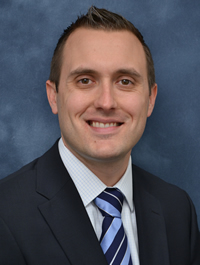Author Interviews, Cost of Health Care, Dermatology, JAMA / 12.10.2015
Compression Device Reduces Lymphedema Complications and Costs
 MedicalResearch.com Interview with:
Pinar Karaca-Mandic, PhD on behalf of the authors
Associate Professor
Division of Health Policy and Management
University of Minnesota
Medical Research: What is the background for this study? What are the main findings?
Dr. Pinar Karaca-Mandic: Lymphedema is a common disease affecting several million people in the U.S, in particular cancer patients. The disease is associated with edema, recurrent cellulitis, loss of physical function, stress, and of course diminished quality of life. It is also associated with high health care costs. While there is no cure for lymphedema currently, it can be managed well with proper care. Pneumatic compression devices offer a valuable lymphedema self-management option. However, there is limited information on the effectiveness of these devices using data from real world settings. In this paper, we used administrative and claims-based data from a major national insurer to examine the effectiveness of an advanced pneumatic compression device. We examined health economics costs as well as clinical health utilization outcomes associated with the use of the device.
We found that the receipt of the device is associated with large declines in cellulitis rates.
For example, among the cancer patients, cellulitis infection rates by 79% (from 21% to 4.5%). We saw similar reductions for patients without cancer (75%). We also observed large reductions in the use of manual therapy and in lymphedema related outpatient hospital visits. Finally, lymphedema related outpatient costs decreased substantially – for example for the cancer patients, they halved reducing from about $1,500 to $700 among cancer patients, and they declined by 65% from about $1,700 to $600 for patients without cancer. Among cancer patients, total lymphedema-related costs per patient, excluding medical equipment, declined by 37% and declined by 36% in patients without cancer.
(more…)
MedicalResearch.com Interview with:
Pinar Karaca-Mandic, PhD on behalf of the authors
Associate Professor
Division of Health Policy and Management
University of Minnesota
Medical Research: What is the background for this study? What are the main findings?
Dr. Pinar Karaca-Mandic: Lymphedema is a common disease affecting several million people in the U.S, in particular cancer patients. The disease is associated with edema, recurrent cellulitis, loss of physical function, stress, and of course diminished quality of life. It is also associated with high health care costs. While there is no cure for lymphedema currently, it can be managed well with proper care. Pneumatic compression devices offer a valuable lymphedema self-management option. However, there is limited information on the effectiveness of these devices using data from real world settings. In this paper, we used administrative and claims-based data from a major national insurer to examine the effectiveness of an advanced pneumatic compression device. We examined health economics costs as well as clinical health utilization outcomes associated with the use of the device.
We found that the receipt of the device is associated with large declines in cellulitis rates.
For example, among the cancer patients, cellulitis infection rates by 79% (from 21% to 4.5%). We saw similar reductions for patients without cancer (75%). We also observed large reductions in the use of manual therapy and in lymphedema related outpatient hospital visits. Finally, lymphedema related outpatient costs decreased substantially – for example for the cancer patients, they halved reducing from about $1,500 to $700 among cancer patients, and they declined by 65% from about $1,700 to $600 for patients without cancer. Among cancer patients, total lymphedema-related costs per patient, excluding medical equipment, declined by 37% and declined by 36% in patients without cancer.
(more…)



















